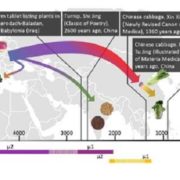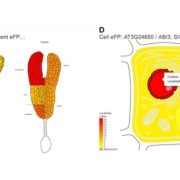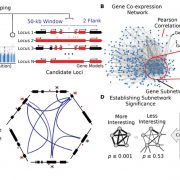Review: Translating research from Arabidopsis to crops
 This year marks the 25th anniversary of the publication of the Arabidopsis genome, a milestone that lives large in those of us who experienced it and eagerly envisioned how this new knowledge would be used. The May 2025 issue of The Plant Cell focuses on how research on this little model plant has translated outwards. One of the reviews in this focus issue, by Uauy et al., looks closely at the challenges and opportunities for crop improvement that stem from Arabidopsis research. This review follows several genes, correlated with a given trait in Arabidopsis, on their journey into crop plants. The highlighted genes include those associated with stress tolerance, production of omega-3 fatty acids, starch synthesis, and epidermal patterning / cuticle formation. Each story is interesting on its own, but when read together several key messages emerge. Translating from a simple model species is difficult but vital to crop research, due to the ease with which gene expression and function can be manipulated and analyzed in Arabidopsis. However, obstacles to translation include challenges of crop plant transformation, differences in the fundamental biology of Arabidopsis plants versus crop plants, and the fact that field-grown crops experience tremendous environmental fluctuations that aren’t usually accounted for in Arabidopsis studies. Enjoy this review and the rest of the focus issue, and join us May 30th for a lively panel discussion with some of the authors whose work appears in it (register here). (Summary by Mary Williams @PlantTeaching.bsky.social) Plant Cell 10.1093/plcell/koaf059
This year marks the 25th anniversary of the publication of the Arabidopsis genome, a milestone that lives large in those of us who experienced it and eagerly envisioned how this new knowledge would be used. The May 2025 issue of The Plant Cell focuses on how research on this little model plant has translated outwards. One of the reviews in this focus issue, by Uauy et al., looks closely at the challenges and opportunities for crop improvement that stem from Arabidopsis research. This review follows several genes, correlated with a given trait in Arabidopsis, on their journey into crop plants. The highlighted genes include those associated with stress tolerance, production of omega-3 fatty acids, starch synthesis, and epidermal patterning / cuticle formation. Each story is interesting on its own, but when read together several key messages emerge. Translating from a simple model species is difficult but vital to crop research, due to the ease with which gene expression and function can be manipulated and analyzed in Arabidopsis. However, obstacles to translation include challenges of crop plant transformation, differences in the fundamental biology of Arabidopsis plants versus crop plants, and the fact that field-grown crops experience tremendous environmental fluctuations that aren’t usually accounted for in Arabidopsis studies. Enjoy this review and the rest of the focus issue, and join us May 30th for a lively panel discussion with some of the authors whose work appears in it (register here). (Summary by Mary Williams @PlantTeaching.bsky.social) Plant Cell 10.1093/plcell/koaf059









